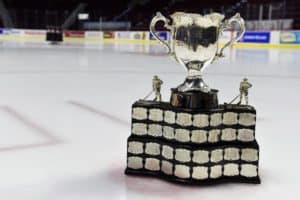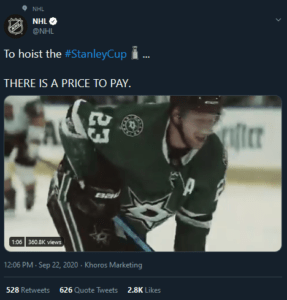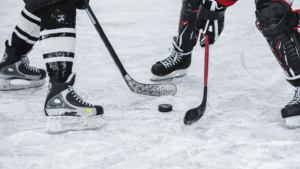Junior hockey serves as a crucial stepping stone for aspiring hockey players who are looking to advance their skills and pursue higher levels of the game. However, navigating this competitive landscape can be complex and overwhelming, especially for teenagers and their parents. This comprehensive guide aims to provide valuable insights, tips, and advice to help both players and parents successfully navigate the world of junior hockey.
Understanding the Junior Hockey Landscape:
Different Junior Hockey Leagues: The world of junior hockey comprises various leagues such as the United States Hockey League (USHL), North American Hockey League (NAHL), Canadian Junior Hockey League (CJHL), and more. Each league has its own unique characteristics and significance in terms of competition level, exposure, and player development opportunities. Understanding the differences between these leagues will help players and parents make informed decisions about which league aligns with their goals and abilities.
Age and Eligibility: Junior hockey leagues have specific age requirements and eligibility criteria. These criteria may include birth year restrictions, draft processes, and import player rules. Familiarize yourself with the eligibility requirements to ensure you meet the necessary criteria for participation in junior hockey.
Setting Realistic Goals:
Self-Assessment: Conducting a realistic assessment of your skills, strengths, and weaknesses is essential when considering junior hockey. Evaluate your abilities objectively and identify areas for improvement. This self-assessment will help you determine the appropriate level of junior hockey and set realistic goals for your development.
Goal Setting: Once you have evaluated your skills, it’s crucial to set specific, measurable, achievable, relevant, and time-bound (SMART) goals. Whether it’s improving your skating speed, enhancing your shot accuracy, or becoming a more effective team player, setting clear goals will guide your development throughout your junior hockey experience.
Finding the Right Junior Hockey Program:
Research and Evaluation: Take the time to research and evaluate different junior hockey programs. Look into factors such as coaching staff, player development philosophy, playing time opportunities, educational support, and overall reputation. Consider visiting programs, talking to current or former players, and seeking recommendations to make an informed decision about which program aligns with your goals.
Balancing Academics and Hockey:
Academic Requirements: Recognize the importance of academics alongside your hockey pursuits. Junior hockey comes with academic expectations and commitments. Ensure you are aware of the academic requirements and standards within your chosen program. Strive to maintain good grades and seek educational options that support your hockey goals.
Educational Support: Look for junior hockey programs that offer academic support, tutoring services, and flexible schedules. Balancing academics and hockey can be challenging, but with the right support system in place, you can succeed both on and off the ice. Communicate with program administrators and coaches to ensure they prioritize education and provide the necessary resources.
Financial Considerations:
Junior Hockey Costs: Participating in junior hockey incurs financial expenses. These costs include program fees, equipment expenses, travel expenditures, and potentially other miscellaneous fees. Familiarize yourself with the financial commitments associated with junior hockey and consider your family’s financial capabilities.
Seeking Financial Aid: Explore financial aid options available within the junior hockey community. Scholarships, grants, and sponsorship opportunities may help alleviate some of the financial burdens. Research organizations, foundations, and community initiatives that provide financial assistance to young hockey players.
Player Development and Exposure:
Training and Development: Continual skill development is essential for success in junior hockey. Engage in regular on-ice and off-ice training programs to enhance your skills, agility, and overall performance. Seek out dedicated coaches and trainers who can guide your development and help you reach your full potential.
Exposure and Showcase Events: Attending showcases, tournaments, and scouting events is crucial for gaining exposure and catching the attention of college or professional scouts. These events provide opportunities to showcase your skills and increase your visibility within the hockey community. Research and participate in events that align with your goals and aspirations.
Mental and Physical Preparation:
Mental Toughness: Developing mental resilience is key to navigating the challenges of junior hockey. Learn strategies for managing pressure, staying focused, and maintaining confidence. Mental toughness is essential for overcoming obstacles, setbacks, and the demanding nature of the sport.
Physical Conditioning: Maintaining a high level of physical fitness is crucial for optimal performance on the ice. Focus on proper nutrition, strength training, conditioning, and injury prevention strategies. Take care of your body to maximize your potential and minimize the risk of injuries.
Recruiting and College Opportunities:
NCAA Eligibility: If playing college hockey is your goal, familiarize yourself with the eligibility requirements set by the National Collegiate Athletic Association (NCAA). These requirements include academic standards, standardized testing, and clearinghouse registration. Stay on track with your academics and meet the necessary criteria to remain eligible for college hockey programs.
College Recruitment Process: Understanding the college recruitment process is vital for players and parents. Create a player profile that showcases your skills, academic achievements, and character. Reach out to college coaches, attend showcases and camps, and actively engage in the recruitment process. Be proactive, persistent, and professional in your interactions with coaches to increase your chances of earning a college hockey opportunity.
Navigating the world of junior hockey can be an exciting yet complex journey for teenagers and their parents. By understanding the junior hockey landscape, setting realistic goals, finding the right program, balancing academics and hockey, considering financial aspects, focusing on player development, and exploring college opportunities, players and parents can make informed decisions and maximize their potential for success. Remember, junior hockey is not just about the destination; it’s about enjoying the journey and personal growth along the way.











